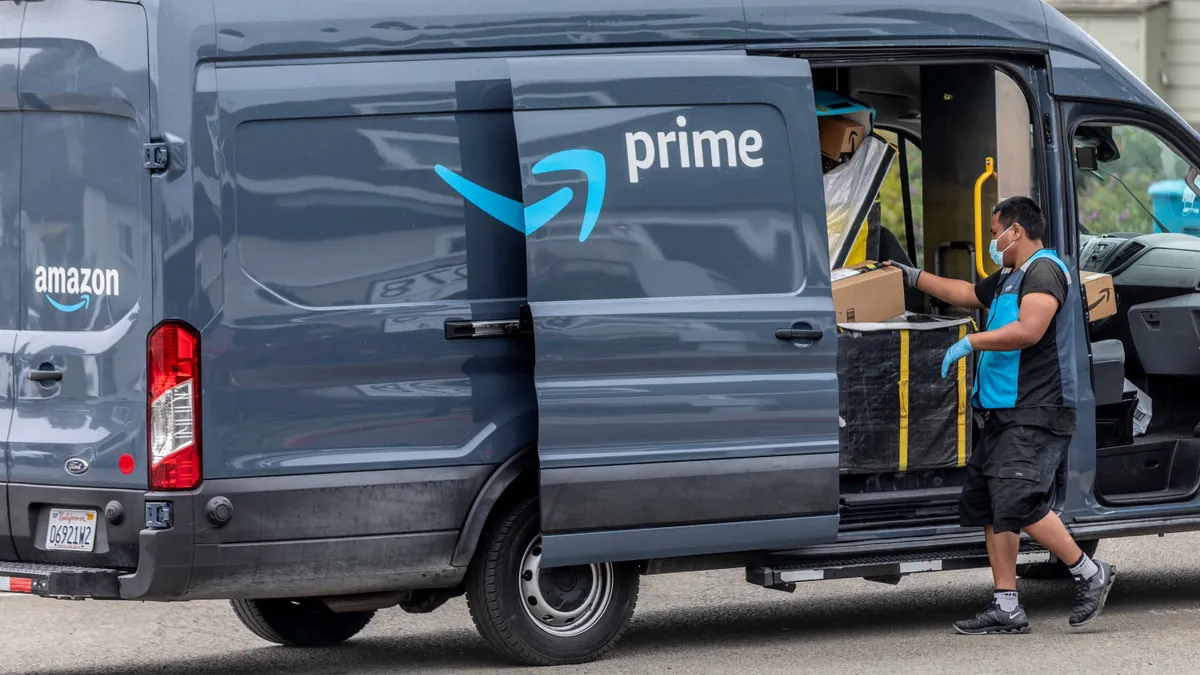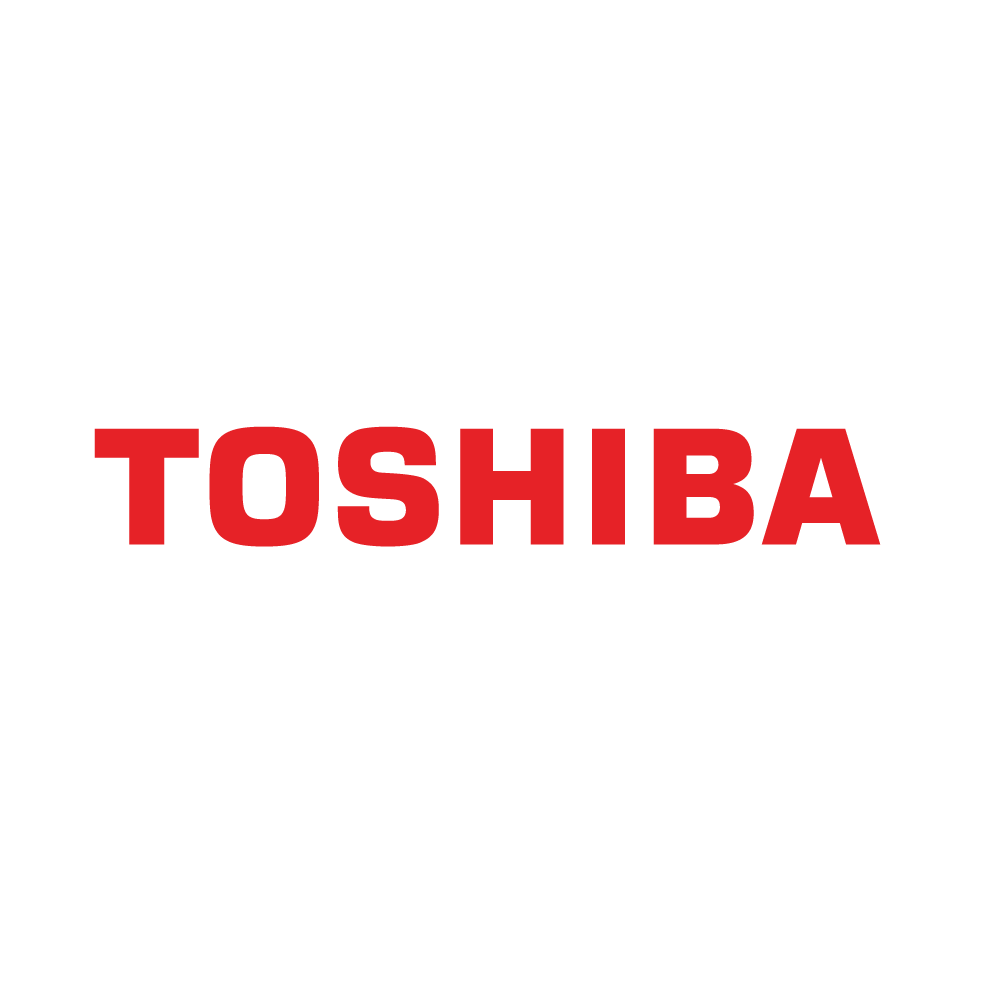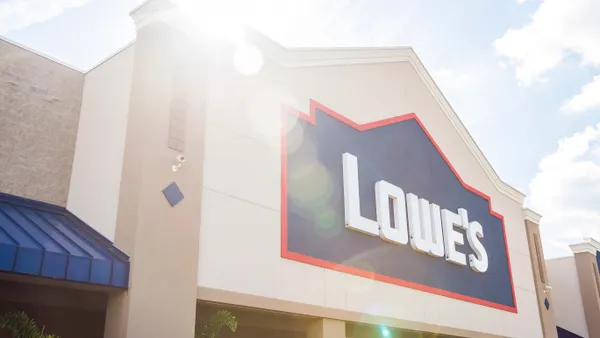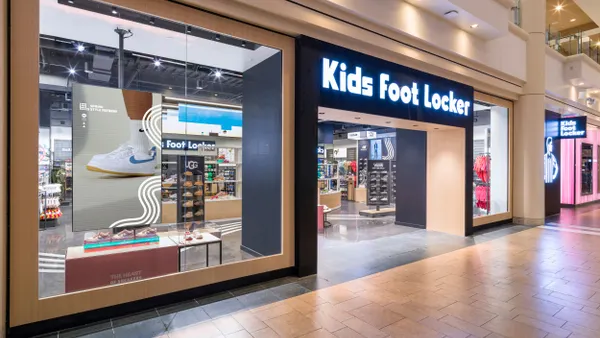Dive Brief:
- Amazon CEO Andy Jassy, speaking to analysts Thursday, compared the U.S. trade war to the pandemic, in that Amazon could gain market share. Tariffs didn’t have a major impact on Q1 results, as online store net sales grew 5% year over year to $57.4 billion, and physical store sales grew 6% to $5.5 billion.
- Net product sales rose 5% to nearly $64 billion. Third-party seller services rose 6% to $36.5 billion, advertising rose 18% to nearly $14 billion, and subscription services rose 9% to $11.7 billion.
- Worldwide shipping costs rose 3% to $22.5 billion. The company doesn’t break out profits from its retail operations: Including $11.5 billion from its AWS cloud services, operating income rose more than 20% to $18.4 billion.
Dive Insight:
Consumers worldwide flocked to Amazon during the pandemic and Jassy said the Trump administration’s tariff policies could again spur shoppers to its vast assortment and competitive prices.
“When there are uncertain environments, customers tend to choose the provider they trust most,” he said. “Given our really broad selection, low pricing and speedy delivery, we have emerged from these uncertain areas with more relative market segment share than we started and better set up for the future. I'm optimistic this could happen again.”
The company and many of its sellers have stocked up on goods in order to avoid new levies, Jassy said. In general, the e-commerce giant has a diverse marketplace seller base, and not all sellers will raise prices. That plus the company’s own work to manage inventory will help ensure that prices on the site won’t spike across the board, he also said.
“There's maybe never been a more important time in recent memory than trying to keep prices low, which we're heads down, pretty maniacally focused on, and then get things to people quickly and take care of customers,” he said.
This appears to be the extent of Amazon’s tariff strategy, at least for now, William Blair analysts led by Dylan Carden said in a Friday research note. The e-commerce giant didn’t join big-box retailers Walmart, Target and Home Depot for a meeting with President Trump about the trade war late last month.
“Management commentary about its tariff strategy was light, though [it] seems to rely heavily on a diversified base of some 2 million sellers that should allow geographic flexibility to arbitrage actual levies set coming out of pending negotiations,” Carden said.
The general uncertainty caused by tariffs led the company to provide a wider range for its Q2 outlook, Chief Financial Officer Brian Olsavsky told analysts. Walmart last month similarly emphasized that it will prioritize keeping prices down and warned that could impact margins. Amazon’s guidance seems affected less by tariffs than by the costs of the company’s Project Kuiper satellite project, however, according to William Blair analysts.
At least one tactic is off the table. Amazon earlier in the week said it had contemplated but ultimately rejected the idea of listing the impact of tariffs to prices on Amazon Haul, a competitor to Shein and Temu launched in November. These ultra-cheap e-commerce sites will be hit hard by the end of the de minimis tariff exception, which had spared imports under $800 from import duties. The White House slammed the pricing idea as “hostile and political” though Amazon said it “was never approved and is not going to happen.”
Retailers and brands in general have been confounded about how to calculate pricing under the ever-changing tariffs and how to talk to customers about their impact.














